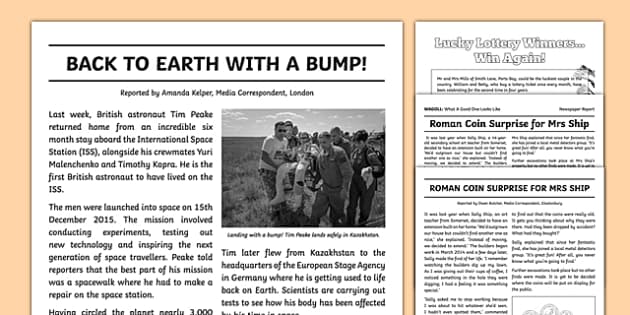News Articles - Truths
News Articles - Truths
Blog Article
How News Articles can Save You Time, Stress, and Money.
Table of ContentsThe Facts About News Articles UncoveredHow News Articles can Save You Time, Stress, and Money.The Best Strategy To Use For News Articles5 Easy Facts About News Articles ShownNews Articles - Questions
Excellent knowledge of different subjects provides trainees an affordable edge over their peers. Although digital and social media sites are easily obtainable, we should not fail to remember just how crucial it is to review the papers. Moms and dads need to attempt and inculcate the habit of reading a paper as a day-to-day regimen to continue the tradition of the revered print medium.Information tales likewise include at the very least among the following important qualities loved one to the desired target market: closeness, importance, timeliness, human interest, anomaly, or repercussion. The related term journalese is often used, usually pejoratively, to refer to news-style writing. Another is headlinese. Papers typically adhere to an expository writing style.
Within these limitations, news tales likewise aim to be thorough. Among the bigger and extra highly regarded newspapers, justness and equilibrium is a significant element in providing info.
Papers with an international target market, for instance, tend to utilize a more official style of writing. The specific choices made by an information outlet's editor or content board are often collected in a style guide; usual style overviews consist of the and the US Information Design Publication. The primary goals of news writing can be summed up by the ABCs of journalism: precision, brevity, and clarity.
Top Guidelines Of News Articles
As a guideline, journalists will not utilize a long word when a brief one will certainly do. News writers attempt to prevent utilizing the same word much more than when in a paragraph (sometimes called an "resemble" or "word mirror").
Headlines occasionally leave out the subject (e.g., "Jumps From Boat, Catches in Wheel") or verb (e.g., "Cat woman lucky"). A subhead (also subhed, sub-headline, subheading, subtitle, deck or dek) can be either a subordinate title under the main headline, or the heading of a subsection of the write-up. It is a heading that precedes the primary message, or a team of paragraphs of the major message.

Additional signboards of any of these kinds might appear later in the write-up (specifically on succeeding web pages) to attract further reading. Such signboards are likewise made use of as tips to the write-up in various other areas of the magazine or website, or as promotions for the item in other magazine or websites. Normal structure with title, lead paragraph (summary in vibrant), other paragraphs (information) and call information.
Example of a hard-lead paragraph NASA is proposing another room job. The company's budget plan request, introduced today, included a strategy to send an additional objective to the Moon. This time around the agency wishes to establish a lasting facility as a jumping-off place for other room experiences. The spending plan requests roughly $10 billion for the project.
The NASA statement came as the agency asked for $10 billion of appropriations for the task. An "off-lead" is Get the facts the second crucial front web page news of the day. The off-lead appears either in the top left edge, or straight below the lead on the. To "bury the lead" is to begin the write-up with history details or details of secondary value to the readers, compeling them to learn more deeply right into an article than they ought to have to in order to uncover the essential points.
News Articles Fundamentals Explained
Typical usage is that a person or more sentences each create their own paragraph. Reporters generally describe the organization or structure of an information story as an upside down pyramid. The essential and most intriguing elements of a tale are put at the beginning, with sustaining details complying with in order of lessening importance.
It enables people to discover a subject to only the depth that their inquisitiveness takes them, and without the charge of information or subtleties that they could take into consideration unimportant, yet still making that information readily available to much more interested viewers. The upside down pyramid framework likewise makes it possible for short visit articles to be trimmed to any type of approximate length throughout layout, to suit the room readily available.
Some authors begin their tales with the "1-2-3 lead", yet there are lots of kinds of lead available. A twist can refer to several points: The last story in the news broadcast; a "happy" story to finish the program.
Longer posts, such as Visit Website magazine cover short articles and the pieces that lead the inside sections of a newspaper, are known as. Function stories vary from straight information in several means. Foremost is the absence of a straight-news lead, a lot of the time. Rather than using the significance of a tale up front, function writers may attempt to lure visitors in.
Not known Details About News Articles
The reporter typically information interactions with interview subjects, making the item extra personal. A function's first paragraphs commonly relate an appealing moment or occasion, as in an "unscientific lead". From the particulars of an individual or episode, its sight promptly broadens to generalizations about the story's subject. The area that signifies what a feature is around is called the or signboard.

The Editor's Toolbox: A Recommendation Guide for Beginners and Professionals (2001) Allan M. Siegal and William G. Connolly. The New York Times Guidebook of Style and Usage: The Authorities Style Overview Utilized by the Writers and Editors of the Globe's Many Authoritative Newspaper (2002) M. L. Stein, Susan Paterno, and R.
Report this page